Blueberries (Vaccinium spp.) are one of the most rewarding fruit crops for home gardeners and commercial growers alike. Known for their delicious, antioxidant-rich berries, attractive foliage, and stunning autumn colors, blueberry plants thrive in a range of climates — but they have very specific cultural needs. Chief among them is proper watering.
Consistent, appropriate watering is crucial to blueberry health, growth, and fruit production. Since blueberries have shallow, fibrous root systems and prefer consistently moist, well-drained, acidic soils, incorrect watering can quickly result in poor yields, plant stress, or even death. So, how often should you water a blueberry plant? The answer depends on factors like the plant’s age, growth stage, soil type, weather conditions, and whether it’s grown in the ground or in a container.
This detailed guide will explain everything you need to know about watering blueberry plants — including recommended frequencies, seasonal adjustments, soil and container care, and common mistakes to avoid.
Why Is Watering So Important for Blueberry Plants?
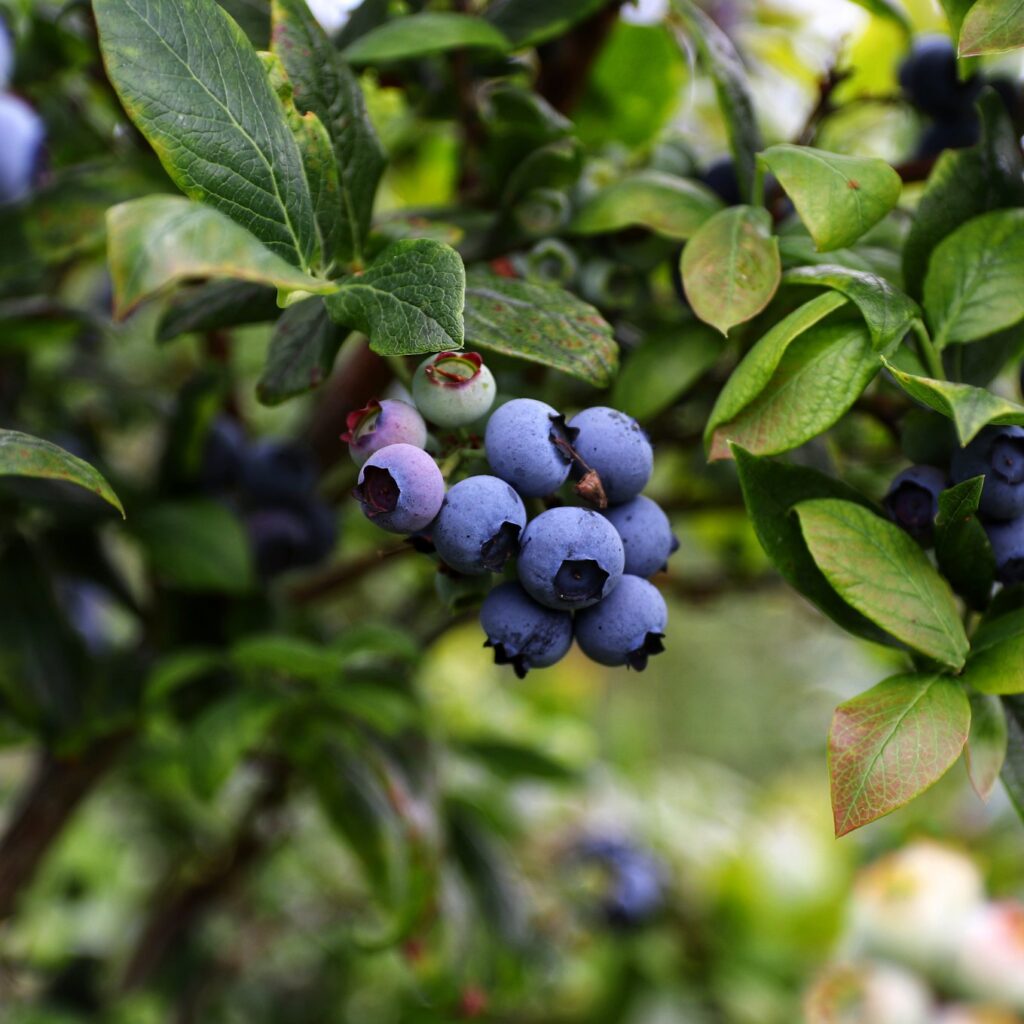
Water is essential for blueberry plants because:
- It aids in photosynthesis, nutrient uptake, and metabolic functions.
- Maintains leaf and stem turgor, keeping the plant upright and healthy.
- Supports the production of flower buds and fruit set.
- Prevents problems like wilting, fruit shriveling, poor yields, and weak plant growth.
- Helps prevent leaf scorch and heat stress in warmer climates.
Because their roots are shallow — typically reaching no deeper than 12 inches — blueberries are especially sensitive to fluctuations in soil moisture. Even short dry spells can cause serious stress.
How Often Should You Water a Blueberry Plant?
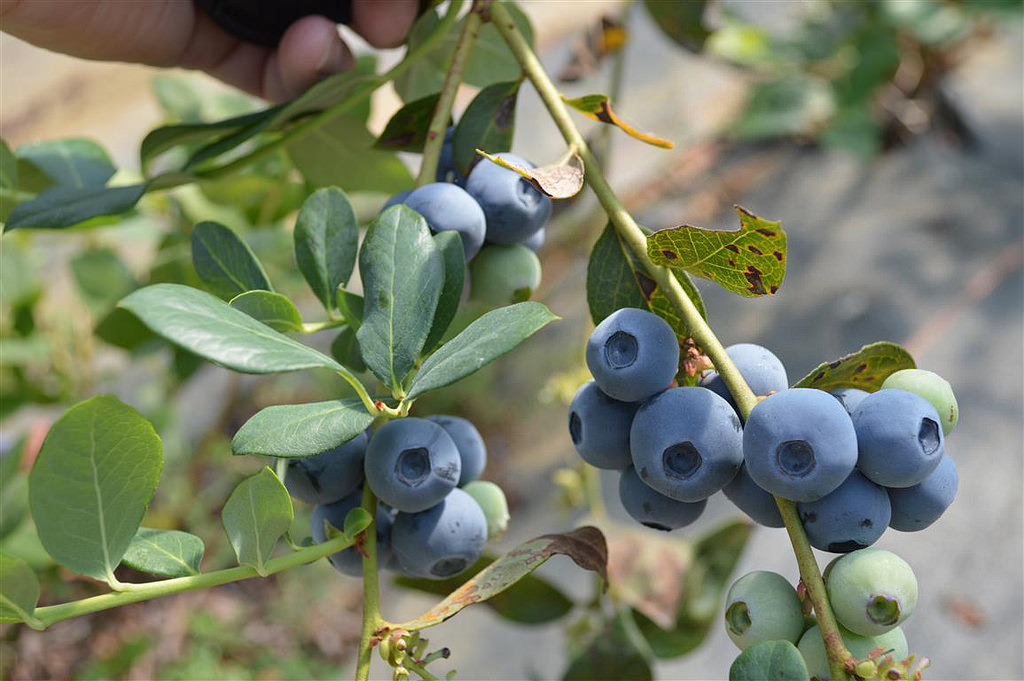
Watering needs vary by plant age, season, soil type, and local weather.
| Plant Stage | Watering Frequency |
|---|---|
| Newly planted bushes (first 4–6 weeks) | Every 2–3 days to keep soil evenly moist |
| Actively growing plants (spring) | Every 3–5 days, adjusting for rainfall |
| Flowering and fruiting season | Every 1–2 days in hot or dry weather |
| Post-harvest period (late summer to autumn) | Every 5–7 days depending on soil and rain |
| Dormant season (winter) | Water occasionally if soil is dry for weeks |
Seasonal Watering Needs for Blueberry Plants
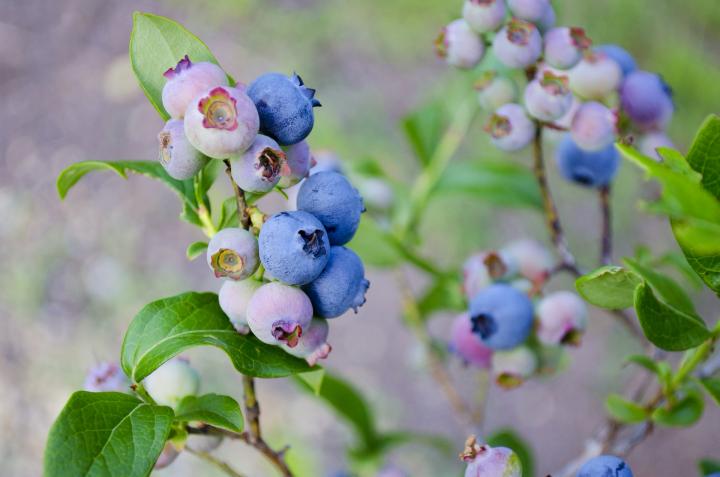
Spring
- As plants wake from dormancy, new leaves and flower buds appear.
- Water 2–3 times a week to support new growth and bud formation.
- Ensure soil remains moist but not waterlogged.
Summer
- Critical period for flowering and fruiting.
- Water every 1–2 days during hot or dry spells.
- Soil must be consistently moist to ensure plump, juicy berries.
- Container plants may need daily watering or even twice daily in extreme heat.
Autumn
- Plants slow growth as temperatures drop and fruiting concludes.
- Water every 5–7 days depending on rainfall.
- Keep soil from drying out entirely to protect shallow roots.
Winter
- Blueberries go dormant in colder climates.
- Water sparingly — about once every 2–3 weeks if soil is dry and there’s no rain.
- Avoid waterlogged soil as it can cause root rot in cold, wet conditions.
How Much Water Does a Blueberry Plant Need?
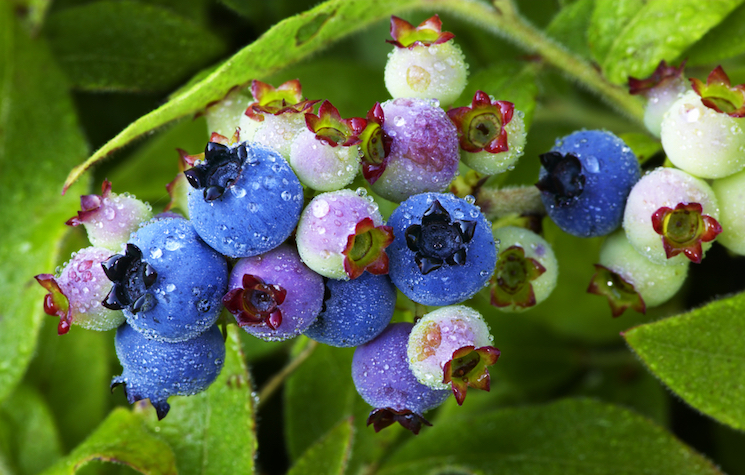
Blueberry plants typically require 1–2 inches (25–50 mm) of water per week during the growing season. In hot, dry conditions, this can increase to 3 inches (75 mm) per week.
General Watering Guidelines:
- Newly planted bushes: 2–5 liters (0.5–1.3 gallons) per plant every 2–3 days.
- Established plants: 10–15 liters (2.6–4 gallons) per plant every 3–5 days.
- During fruiting: 15–20 liters (4–5.3 gallons) per plant in dry conditions.
Deep watering is ideal — moistening the soil to a depth of 12 inches encourages healthy root development and prevents shallow, weak root systems.
Watering Blueberries in Containers
Blueberry plants grown in pots or containers dry out faster than those in the ground.
Tips for container blueberries:
- Check soil moisture daily in summer.
- Water when the top 1–2 inches of soil feel dry.
- Ensure containers have proper drainage holes.
- Avoid standing water at the base of pots.
In summer, container-grown blueberries may require watering once or twice a day.
How Soil Type Affects Watering Frequency
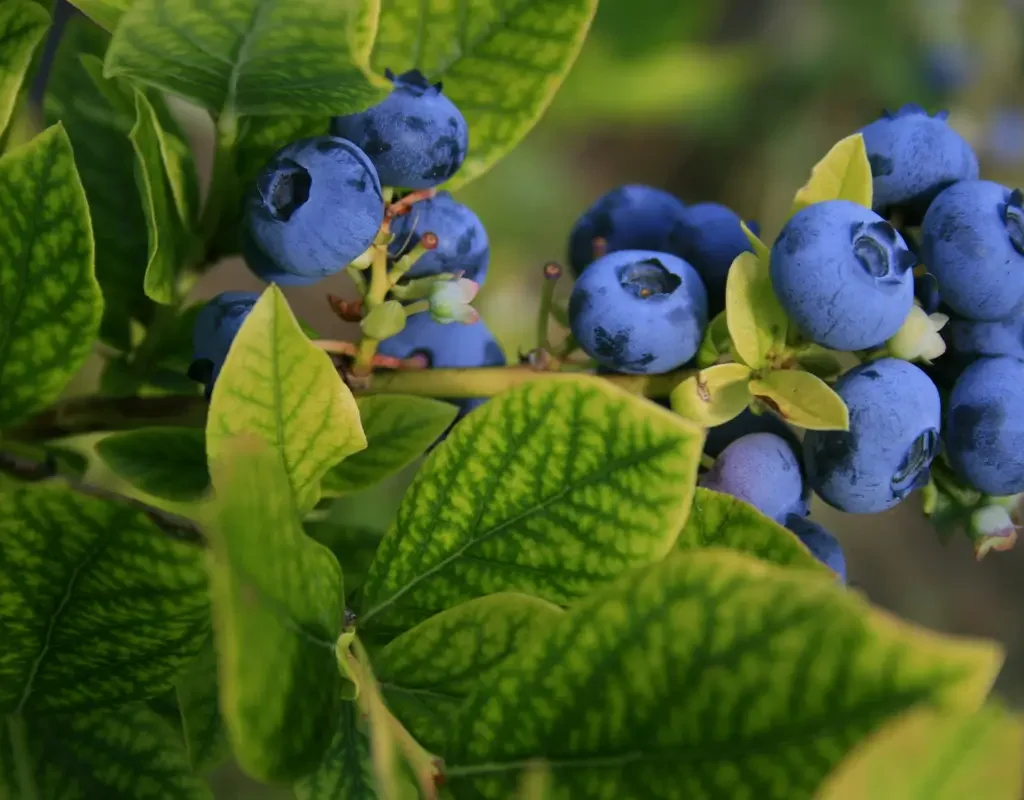
Blueberries are particular about soil. They prefer acidic soils with a pH of 4.5 to 5.5 and good drainage. Watering frequency depends on soil type:
| Soil Type | Watering Frequency |
|---|---|
| Sandy soils | Drain quickly; water more often |
| Loamy soils | Hold moderate moisture; ideal |
| Clay soils | Hold water longer; water less often but improve drainage |
Ideal soil: A light, well-draining, organic-rich loam. Add peat moss, pine bark, or acidic compost to improve water retention and acidity.
Climate and Weather Considerations
In hot, dry, or windy conditions:
- Increase watering frequency during heatwaves and droughts.
- Apply a 3–4 inch mulch layer (pine bark, pine needles, or wood chips) to conserve soil moisture and suppress weeds.
In humid, rainy climates:
- Decrease watering.
- Check soil moisture before each session to avoid overwatering.
Best Time of Day to Water Blueberry Plants
The best times to water blueberries are:
- Early morning: Minimizes evaporation and allows leaves to dry before nightfall, reducing disease risk.
- Late afternoon: Acceptable if mornings are missed, but avoid evening watering, which leaves foliage wet overnight.
Benefits of Mulching Blueberry Beds
Mulching is especially beneficial for blueberries:
- Conserves moisture and reduces evaporation.
- Moderates soil temperature.
- Maintains soil acidity.
- Prevents weed competition.
- Improves soil structure over time.
Recommended mulch materials:
- Pine bark
- Pine needles
- Shredded leaves
- Wood chips
Apply mulch 2–4 inches deep, leaving a small space around the plant’s crown.
Signs of Overwatering and Underwatering
Signs of Underwatering:
- Wilting, drooping leaves.
- Dry, shriveled, or bitter berries.
- Brown, crispy leaf edges.
- Stunted growth.
Signs of Overwatering:
- Yellowing leaves.
- Root rot (roots turn brown/black and mushy).
- Mushy, tasteless fruit.
- Fungal problems like leaf spot or blight.
Pro Tip: Check soil moisture 3–4 inches below the surface. Water when it feels dry at this depth.
Common Watering Mistakes to Avoid
| Mistake | Effect | Solution |
|---|---|---|
| Frequent, shallow watering | Shallow, weak root systems | Water deeply and less frequently |
| Overwatering during wet seasons | Root rot, fungal issues | Water only when necessary |
| Watering foliage instead of soil | Increases disease risk | Water directly at soil level |
| Ignoring soil and weather conditions | Uneven moisture, plant stress | Adjust watering based on environment |
When to Reduce or Stop Watering Blueberry Plants
After harvest:
- Gradually taper off watering as growth slows.
- Water during extended dry spells to maintain healthy canes and roots.
In winter dormancy:
- Water only if soil stays dry for multiple weeks.
- Avoid waterlogged soil, especially in cold, wet weather.
Conclusion
Watering is one of the most important aspects of successful blueberry cultivation. By adjusting your watering routine according to the plant’s age, season, soil type, and local climate, you’ll promote vigorous growth, abundant flowering, and large, sweet berries.
Focus on consistent, deep watering during active growth and fruiting periods, reduce irrigation after harvest, and mulch well to retain soil moisture. Monitor soil moisture regularly and avoid the common mistakes of overwatering and shallow watering.




Leave A Comment